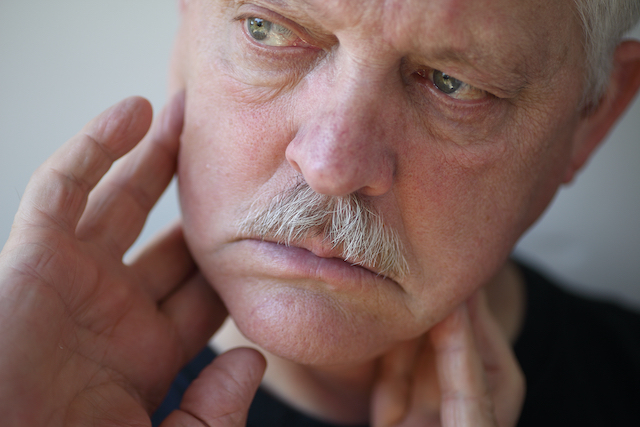News
Try these 5 DIY remedies if you’re dealing with pesky jaw pain

We often taken certain parts of our body for granted until something goes wrong. This is particularly true for the temporomandibular joint (TMJ), which allows the jaw to move up and down, from side to side, and in and out. You use your TMJ every time you move your mouth, meaning that speaking, swallowing, and biting down all require it, but these actions typically occur without an ounce of thought on your part.
This can all change if you happen to experience a temporomandibular disorder (TMD). As we’ve described in in our previous newsletters, TMDs are a group of issues that involve the TMJ or the surrounding muscles and cause a range of bothersome symptoms like jaw pain, difficulty using the mouth, ringing in the ears, earaches, and a popping or clicking sensation. Many individuals with some of these characteristic TMD symptoms also experience issues with their neck, which can lead to headaches, neck pain, and symptoms that mimic muscle pain in the jaw muscles.
Considering how frequently the jaw is used, it doesn’t take long for patients to notice the first signs of a TMD. If you are part of this group, then you can probably recall the initial incident when tasks like speaking or chewing started requiring more effort than usual and stopped you in your tracks. While this may have been just a minor inconvenience at first, persistent issues could have eventually become a significant hindrance on your daily life.
Fortunately, there are a number of steps you can take on your own to address these acute symptoms of a TMD, as many patients will respond to a variety of simple remedies that can be performed at home. Below are our top do-it-yourself (DIY) solutions for the characteristic TMD symptoms, which may also alleviate associated neck symptoms and headaches:
5 DIY remedies for TMD symptoms
1) Heat therapy: applying heat with a moist warm towel or dry heating pad can reduce jaw pain and stiffness by increasing the flow of blood to the area; it’s recommended that you use a warm compress and place it on the jaw and temples for about 10-15 minutes, about twice a day; heat therapy is particularly effective if you have a dull, steady, aching pain
2) Ice therapy: if the heat does not lead to any notable improvements after two days, try applying ice instead; the application of ice will numb the nerves and dull the pain by slowing down the flow of blood to the area; apply an icepack wrapped in a towel to the area for about 15-20 minutes a few times a day
3) Massage: massaging the areas around your jaws can also improve blood flow and provide relief; this can be accomplished by opening your mouth and locating the muscles next to your ears by the TMJ; put your fingers on any area that’s sore and apply gentle pressure in a circular motion; you can also massage the muscles on the sides of your neck if there is tension in that region as well
4) Jaw exercises: regularly moving the jaw in a specific, systematic manner may further reduce TMD symptoms; a selection of the best exercises is below:
- Relaxed jaw exercise: rest your tongue gently on the top of your mouth behind your upper front teeth; allow your teeth to come apart while relaxing your jaw muscles
- Chin tucks: with your shoulders back and chest up, pull your chin straight back, creating a “double chin;” hold for three seconds and repeat 10 times
- Resisted opening of the mouth: place your thumb under your chin; open your mouth slowly, pushing gently against your chin for resistance; hold for three to six seconds, and then close your mouth slowly
- Resisted closing of the mouth: squeeze your chin with your index and thumb with one hand; close your mouth as you place gently pressure on your chin; this will help strengthen your muscles that help you chew
5) Splint or night guard: these devices fit over your upper and lower teeth to prevent these rows from touching one another; in effect, this will lessen the impact of clenching or grinding the teeth and correct your bite by putting your teeth in a better position
In our next post, we’ll shine a spotlight on physical therapy and show why it’s often regarded as the go-to treatment for patients with TMDs who are not improving.
Disclaimer:
The information in the articles, posts, and newsfeed is intended for informational and educational purposes only and in no way should be taken to be the provision or practice of physical therapy, medical, or professional healthcare advice or services. The information should not be considered complete or exhaustive and should not be used for diagnostic or treatment purposes without first consulting with your physical therapist, occupational therapist, physician or other healthcare provider. The owners of this website accept no responsibility for the misuse of information contained within this website.
 MOMENTUM FITNESS
MOMENTUM FITNESS